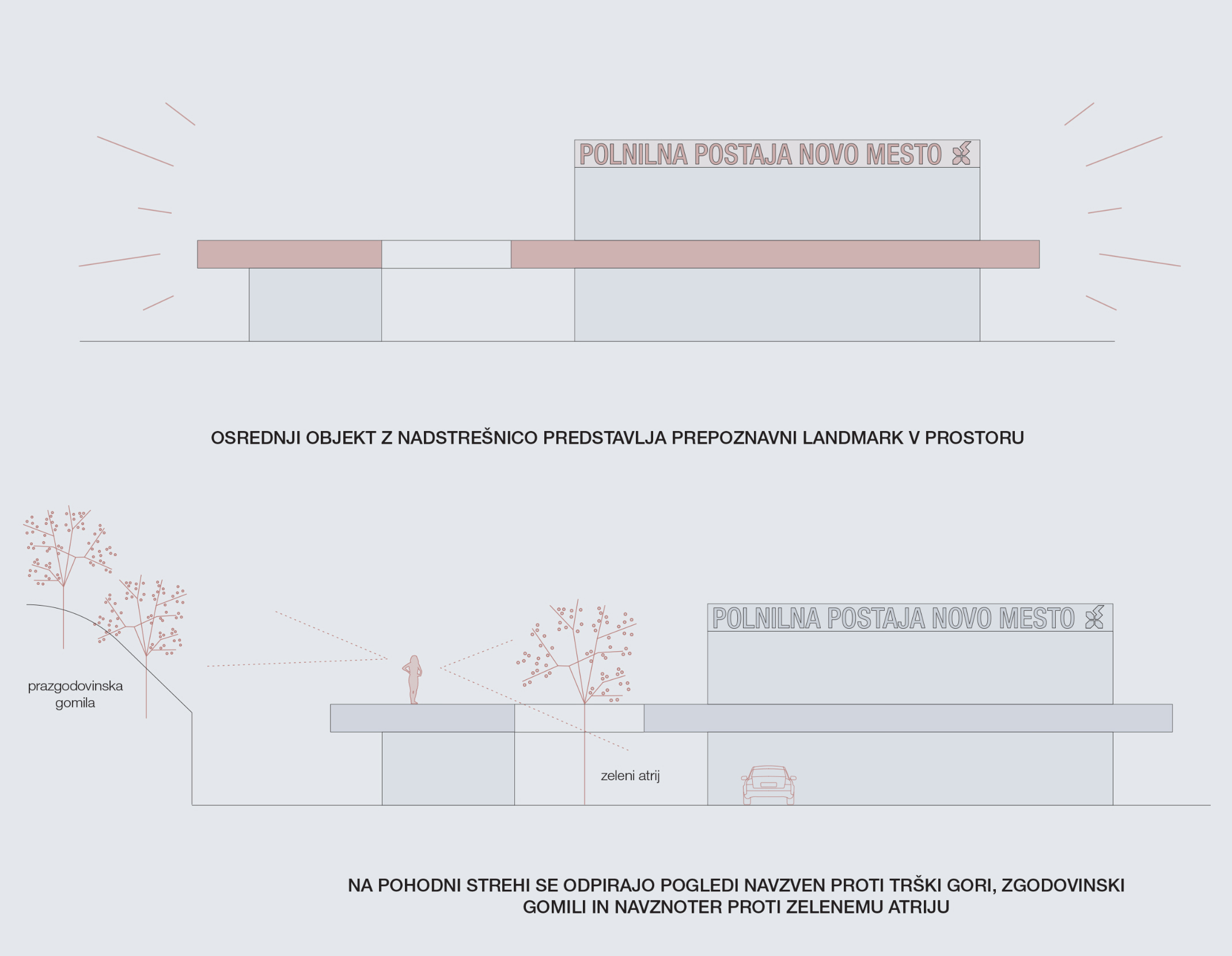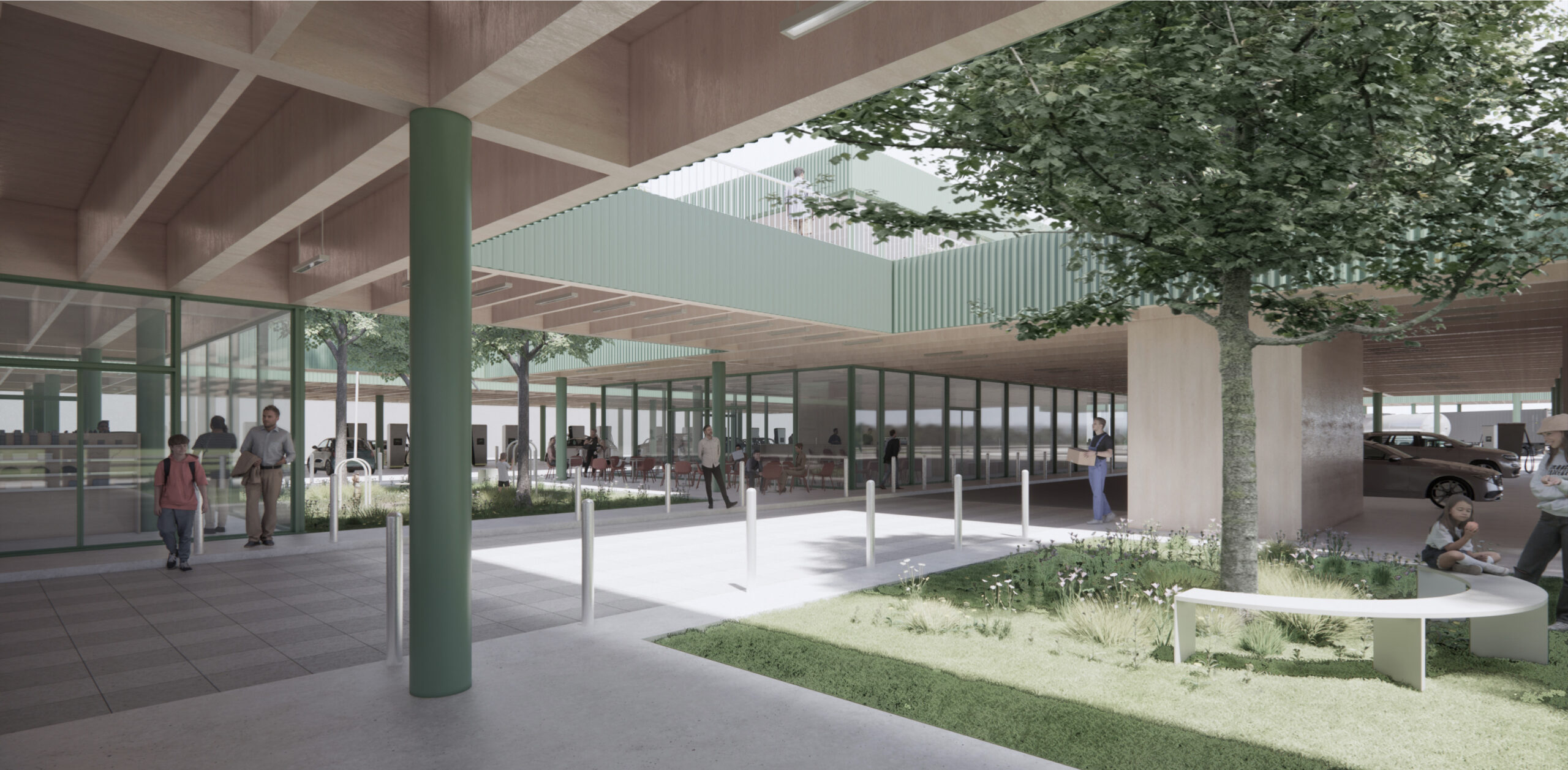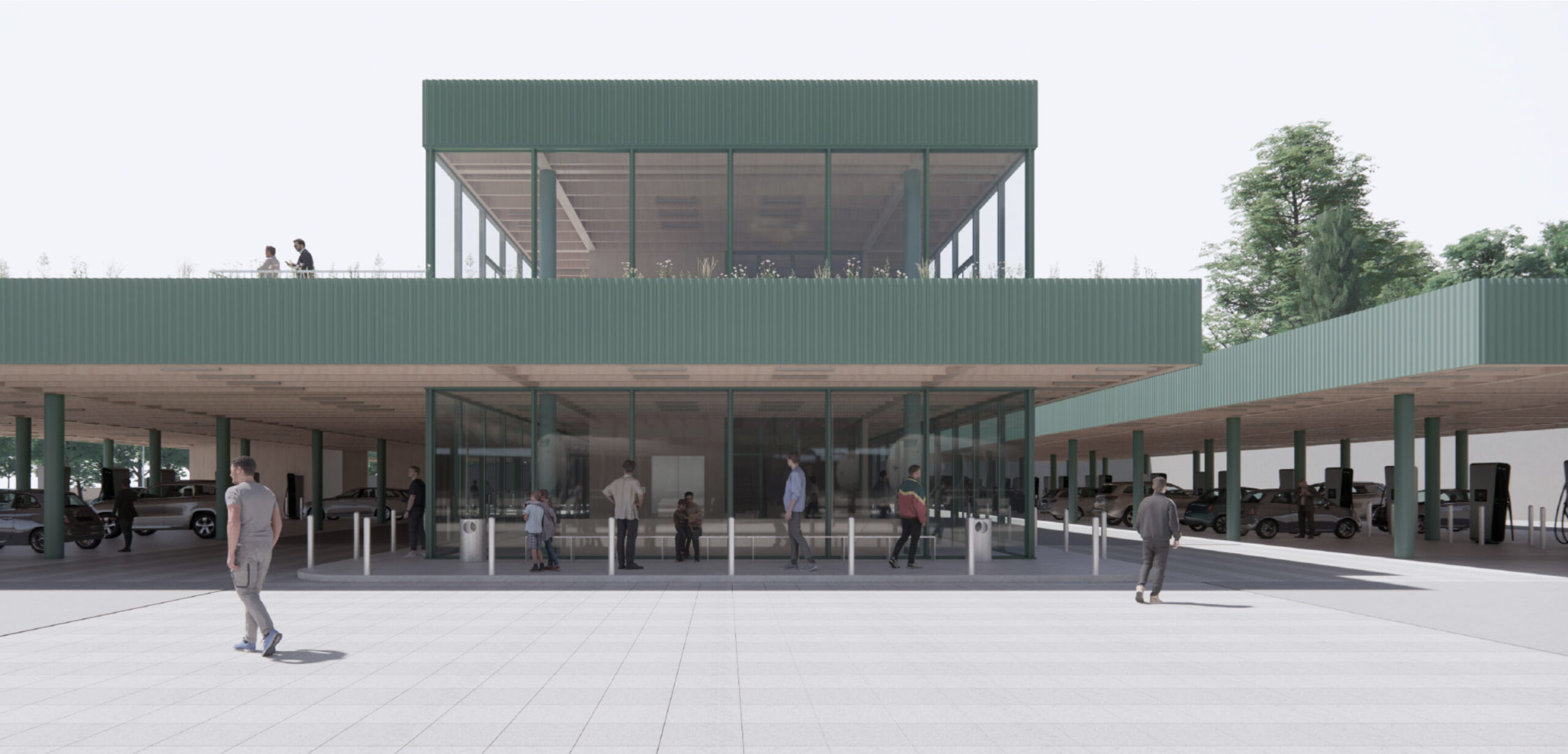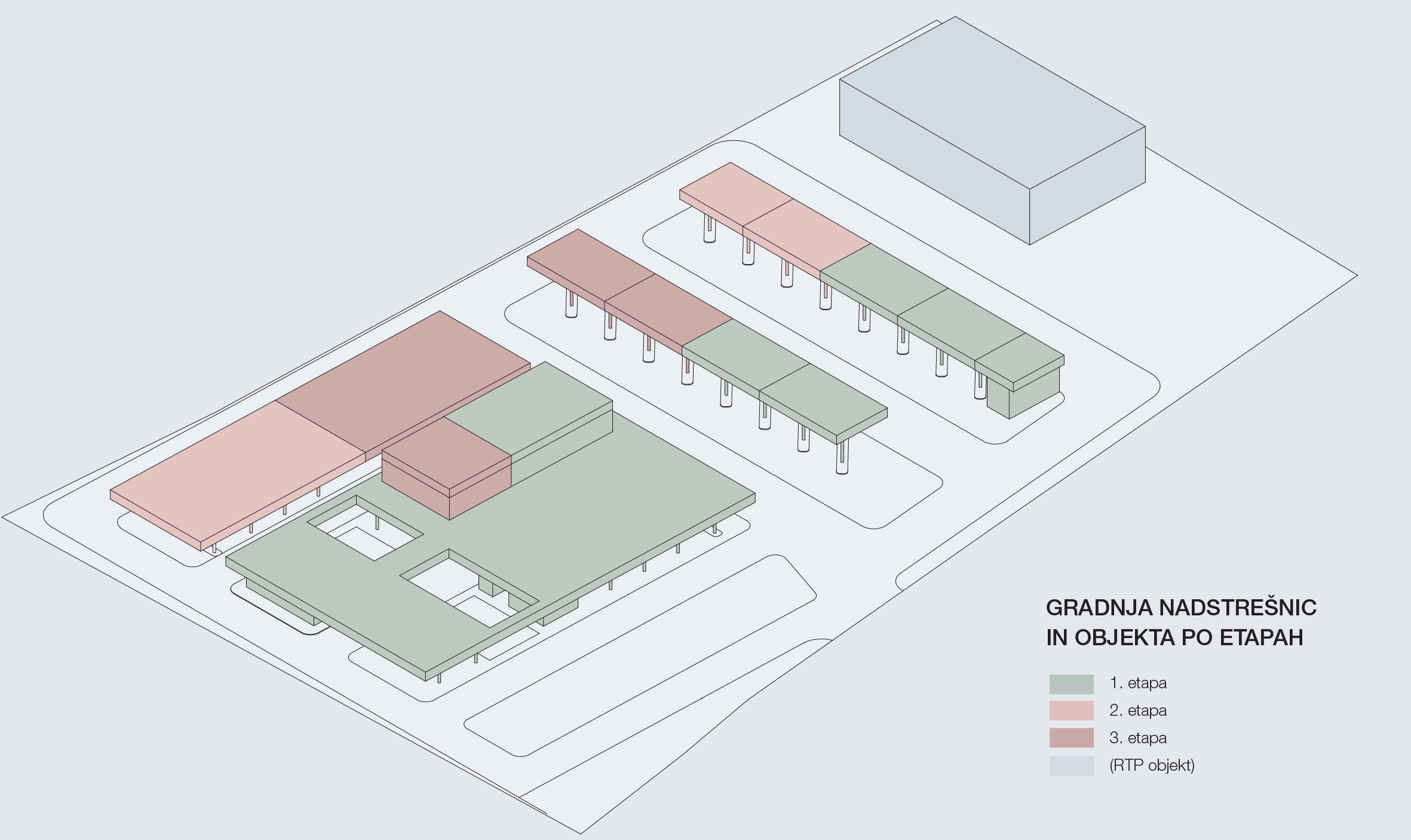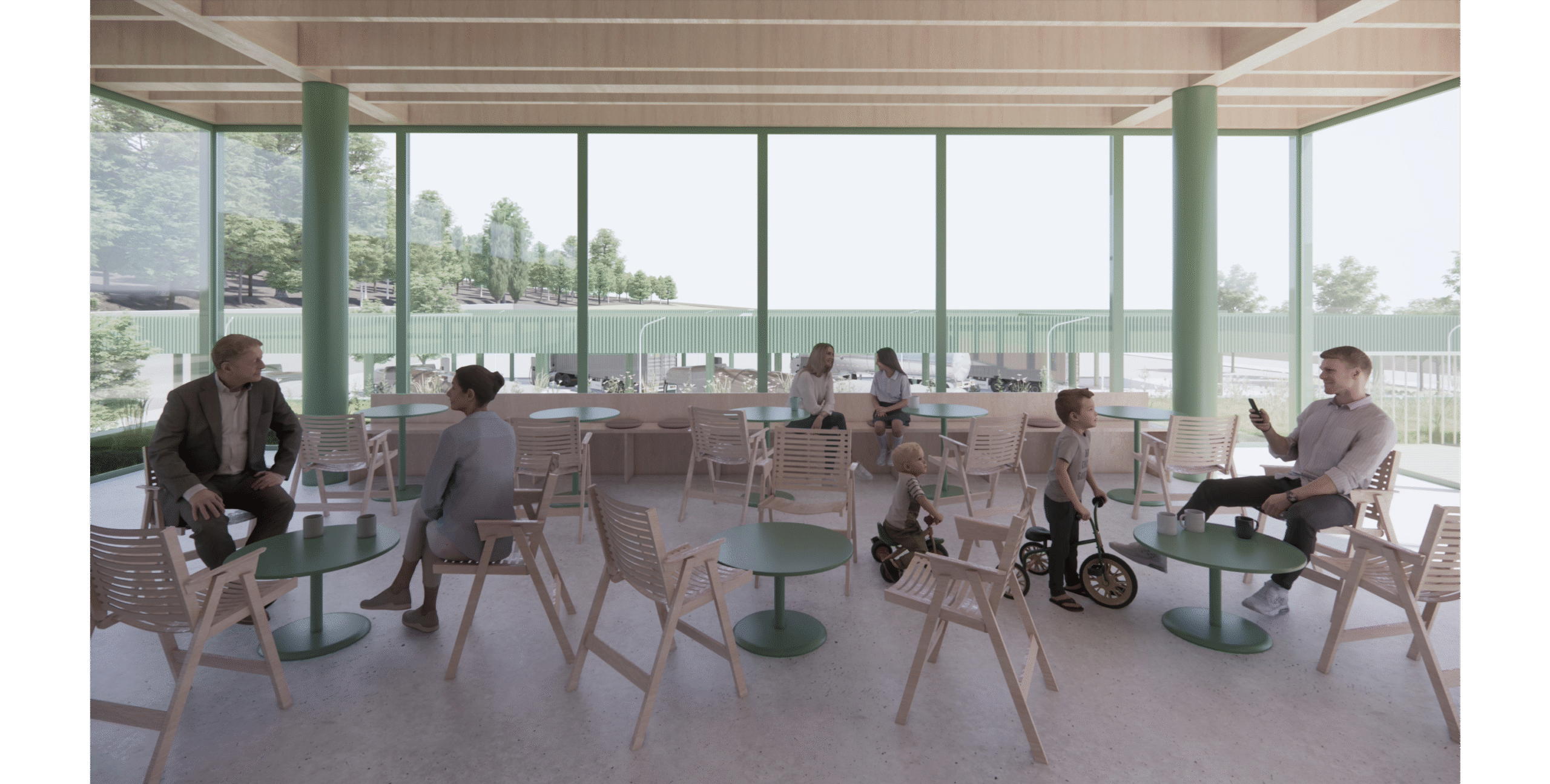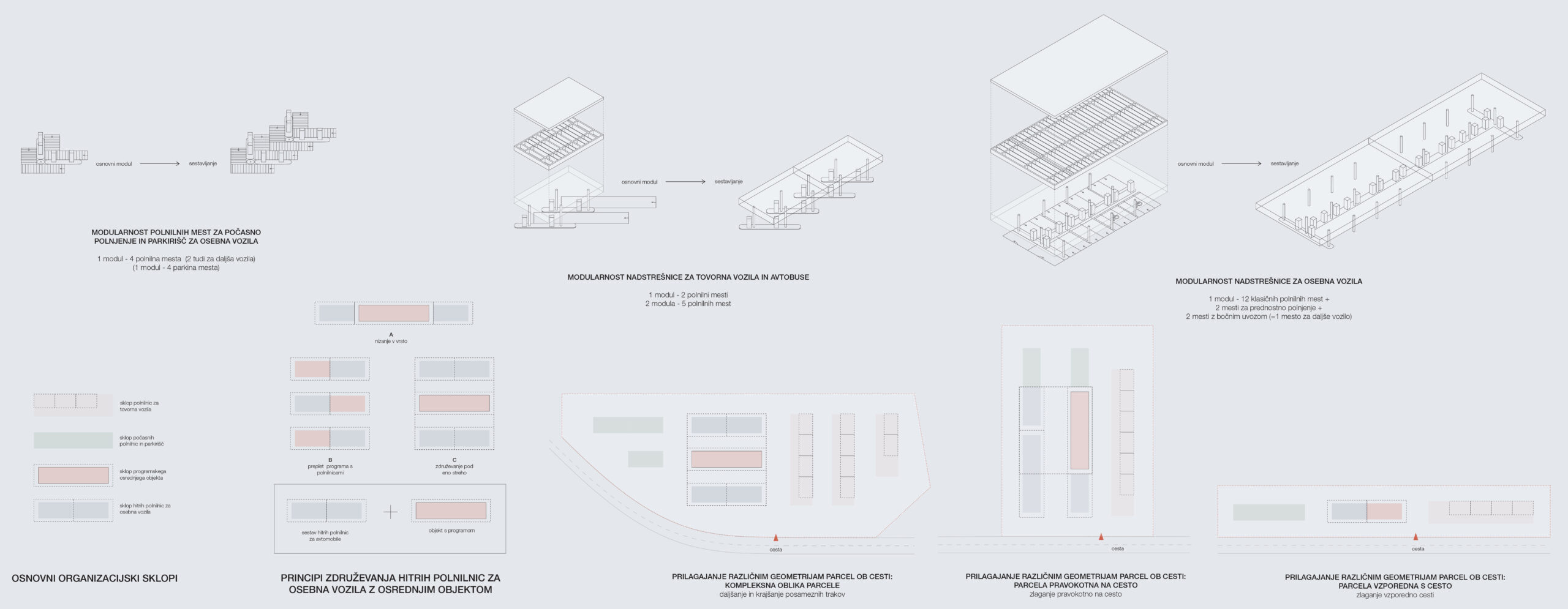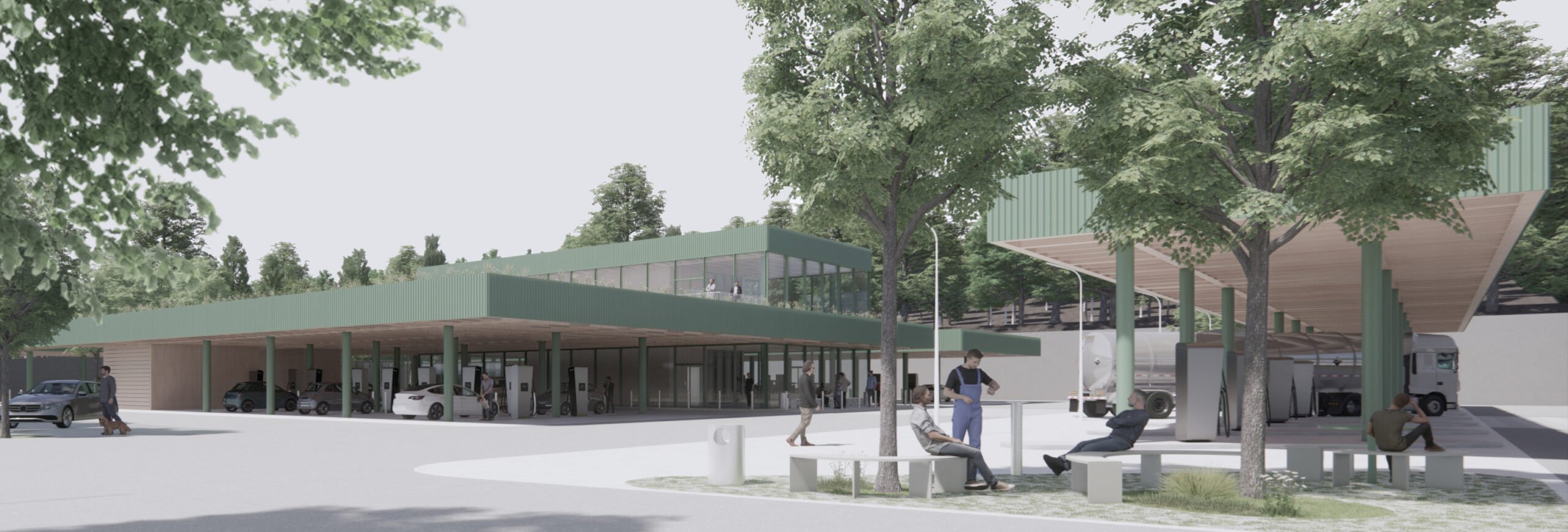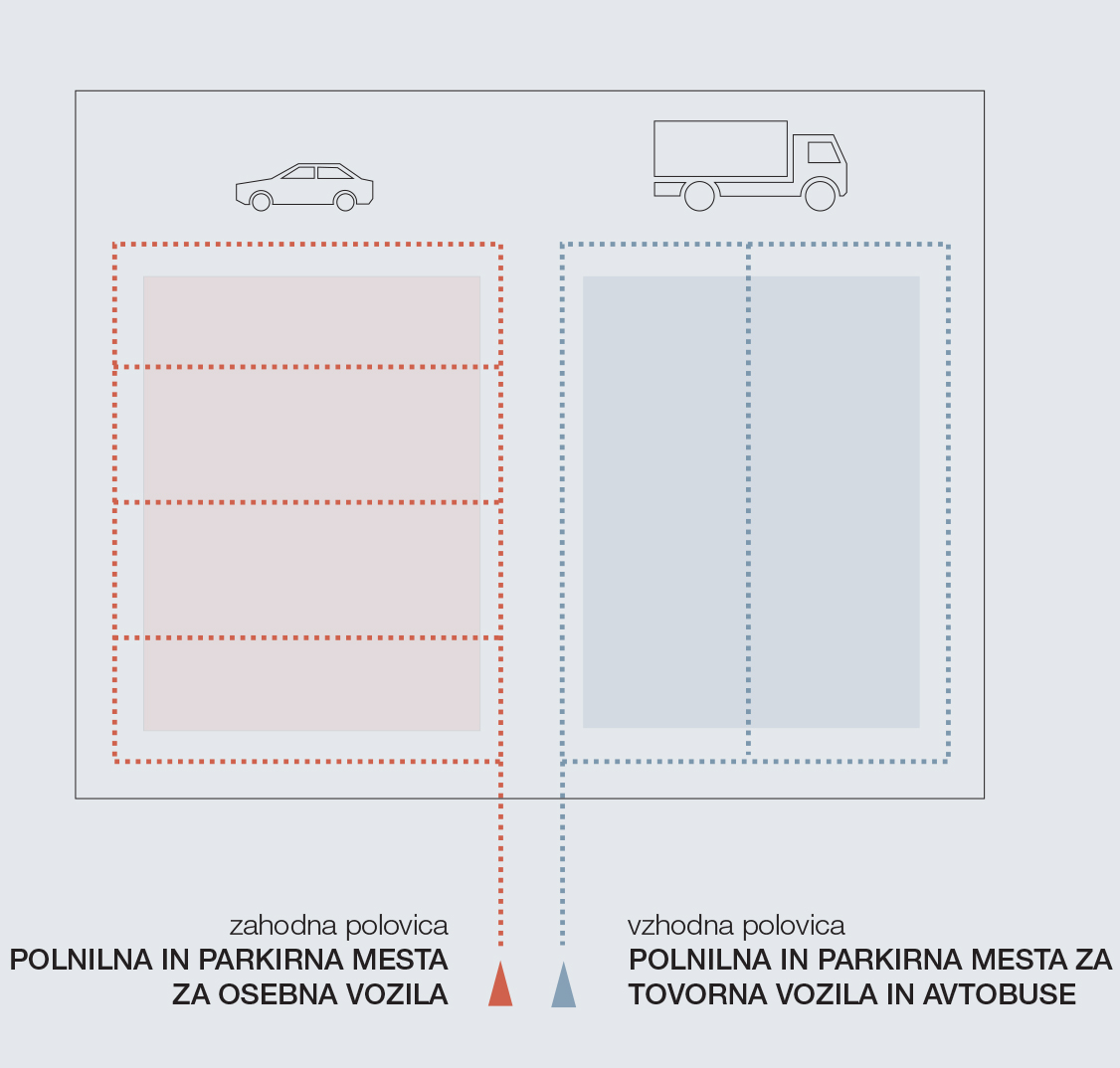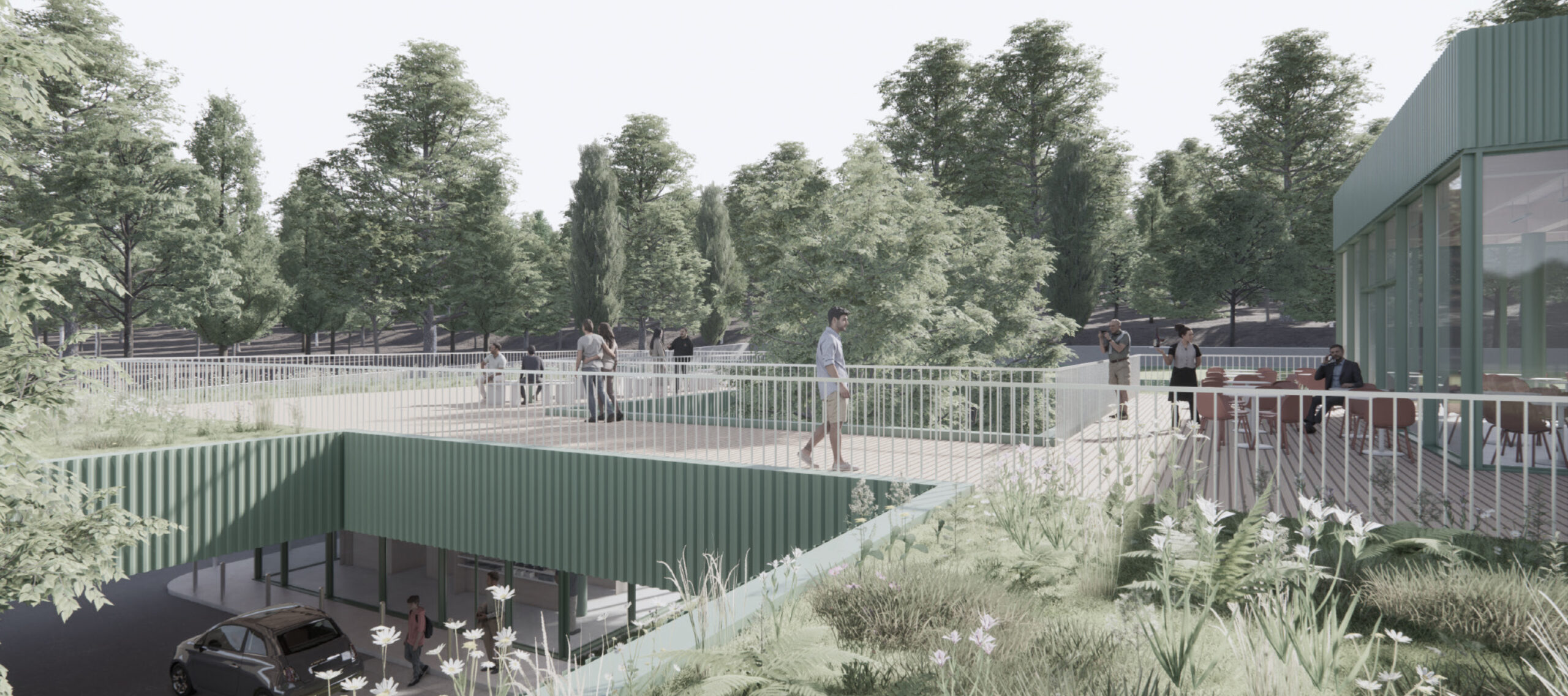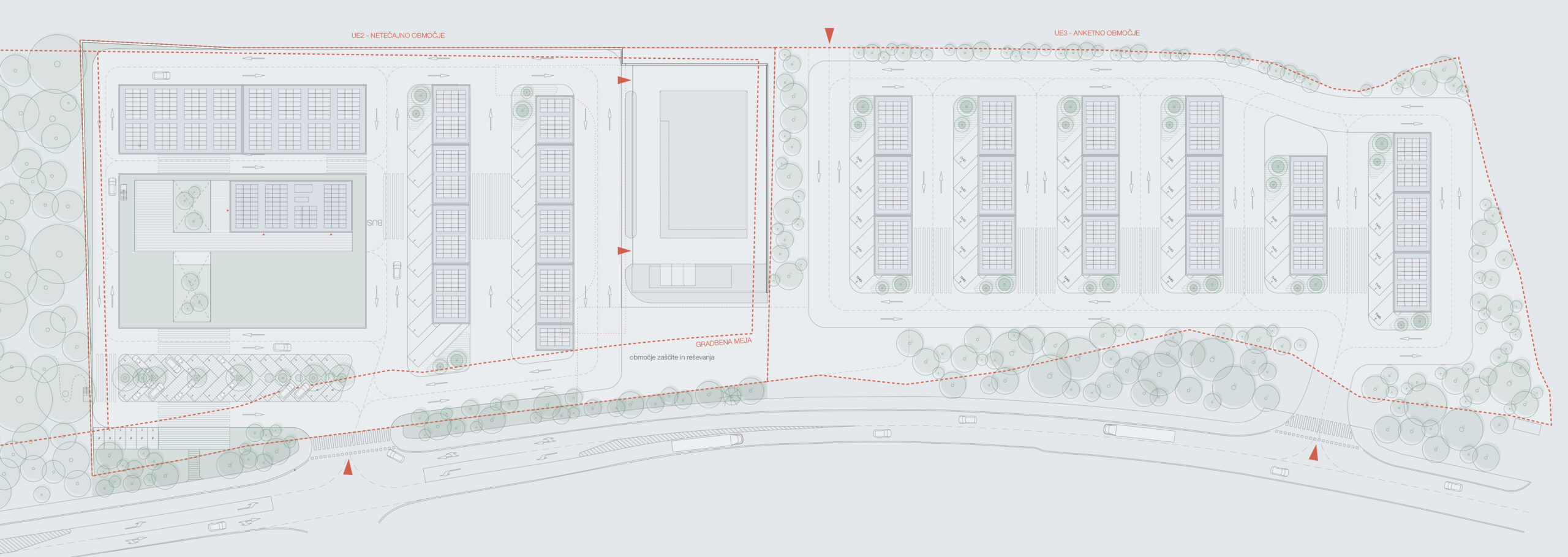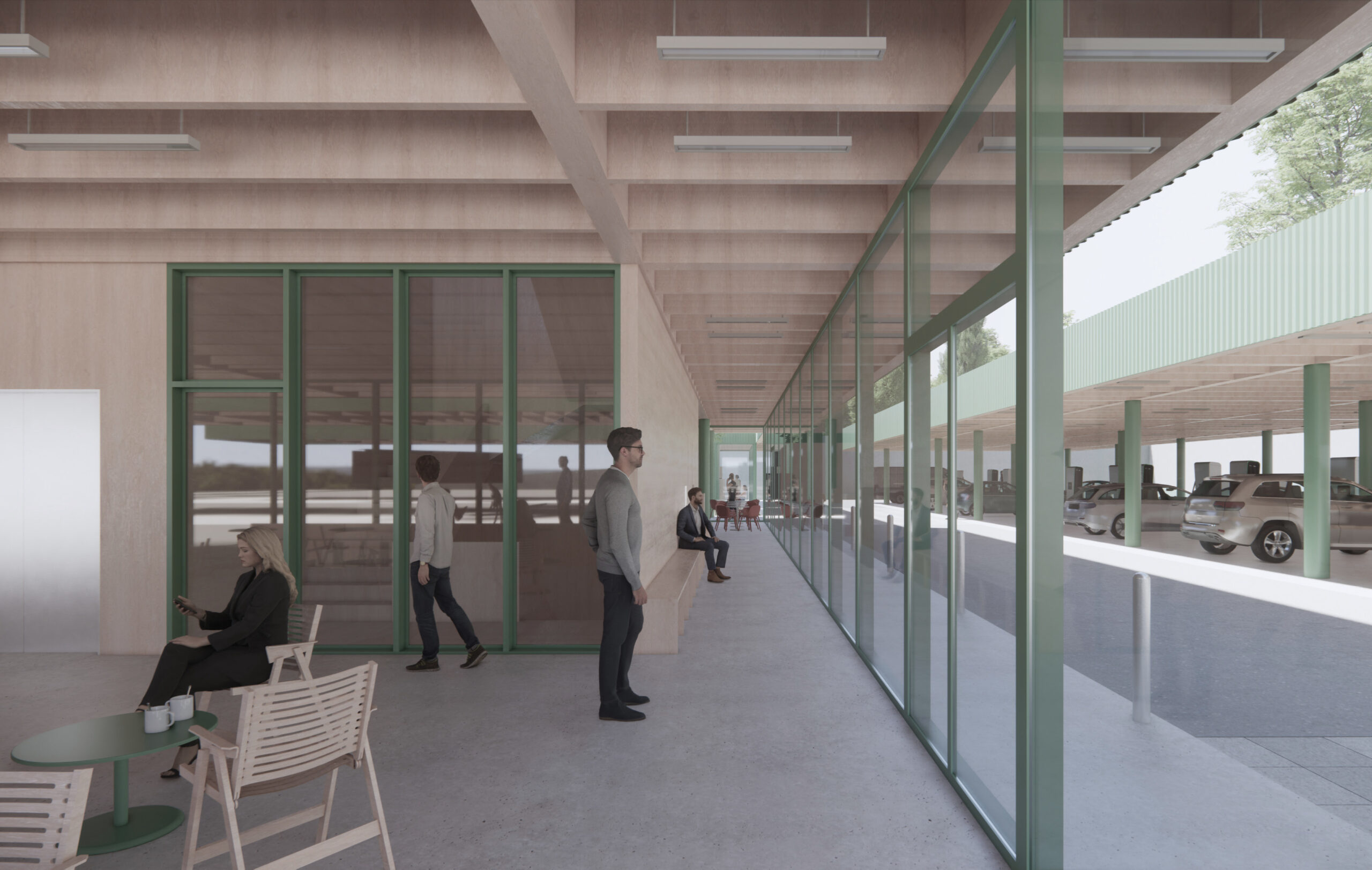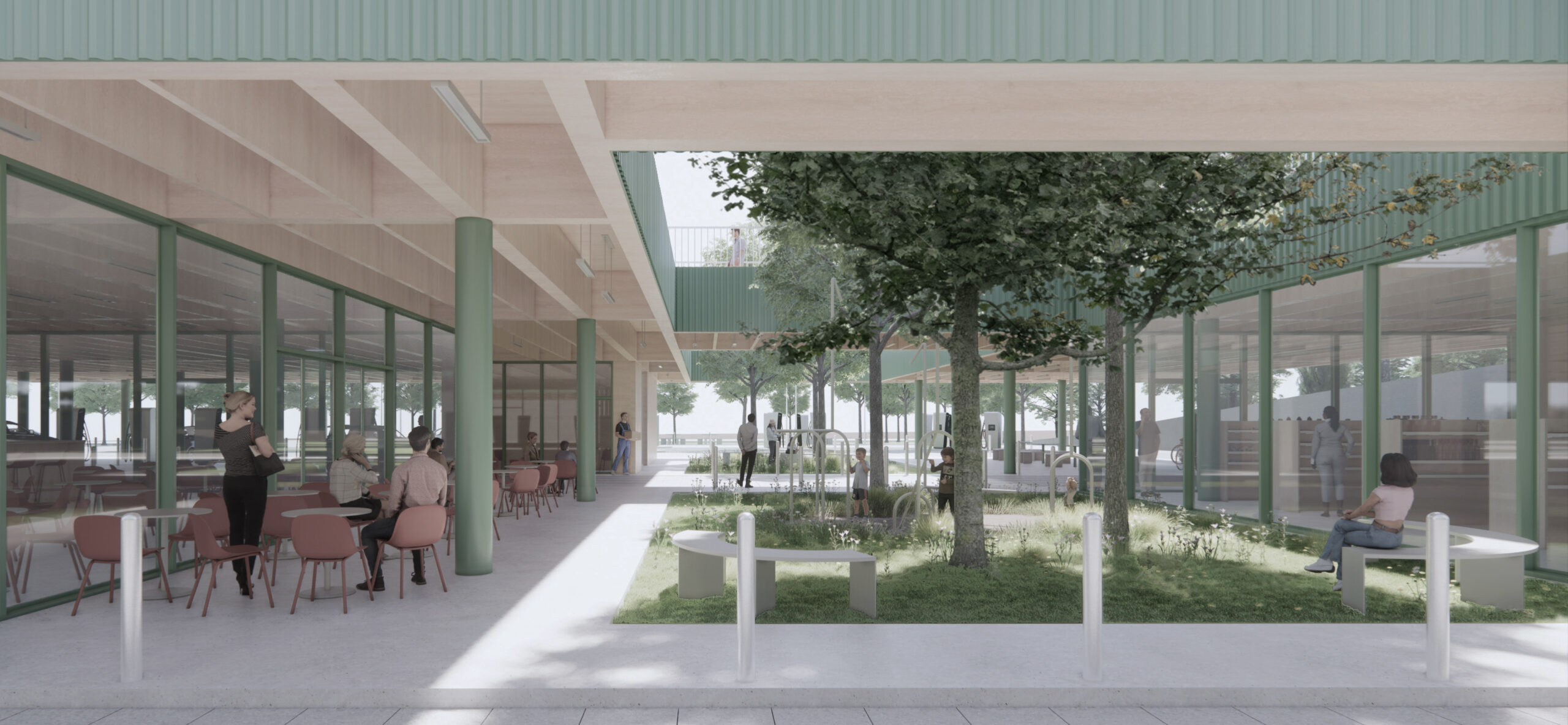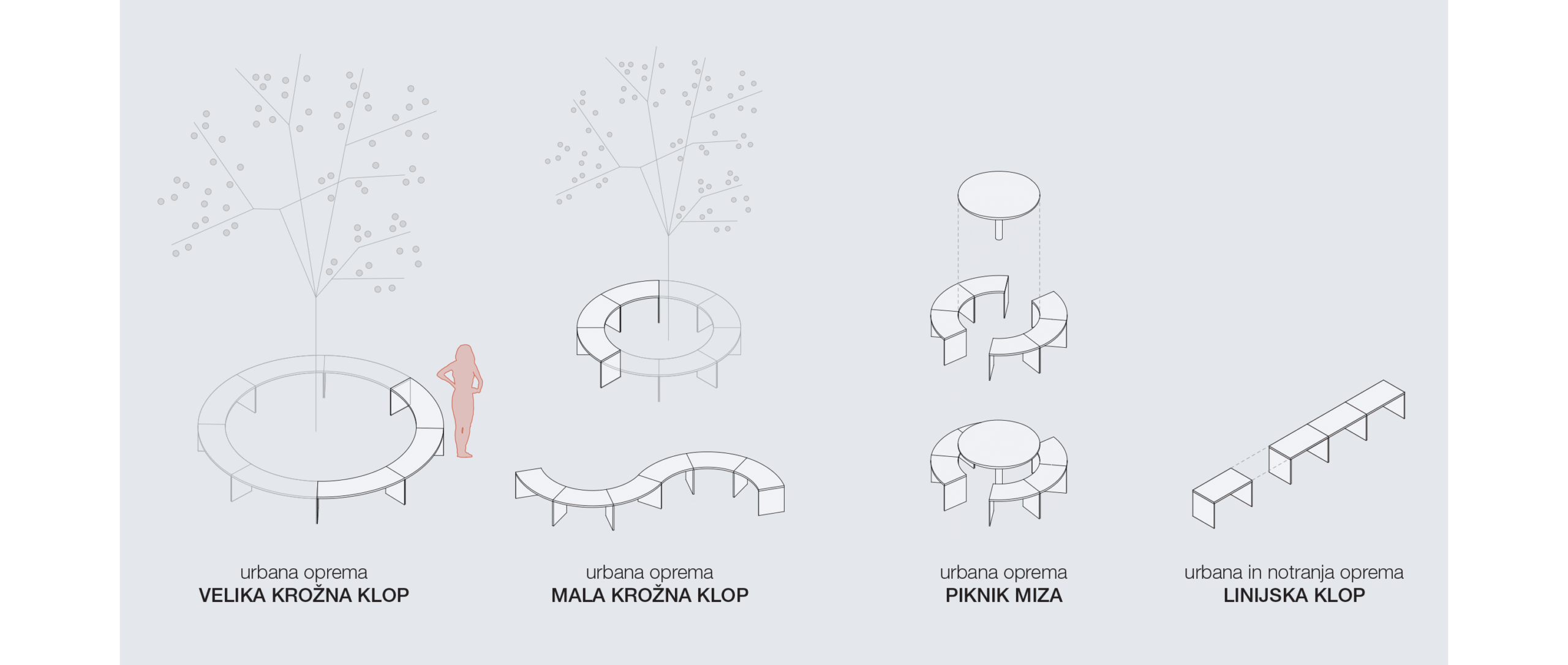High-Power Charging Park

competition entry: Honourable Mention
location: Novo Mesto, Slovenia
project date: 2025
area: 13,800 m2
type: public
client: ELES d.o.o.
project team: m.kocbek architects
Mojca Kocbek, Sara Bogičević, Špela Muhič
The competition site, situated between a historical burial mound on its western side and the hill of Trška Gora to the north, offers an intriguing starting point for the exploration and definition of the concept for Slovenia’s first prototype electric vehicle charging park. Our urban and architectural design is largely shaped by the existing conditions of the site, which is strategically well-integrated into both the road/highway infrastructure and the distinctive Slovenian natural landscape.
The main guiding principle in the design of the charging park is to establish a clear and recognizable identity, subtly embedded within the surrounding landscape. The central idea of the architectural and functional concept is the integration of a main building with a canopy for EV charging stations, which together form a prominent landmark — positioned between the natural landscape on one side and traffic infrastructure on the other. In addition to the central building/canopy, other charging stations with smaller canopies are added in modular units, according to the specific requirements of the location. In architectural terms, the visual and conceptual representation of the central building and canopy is based on the theme of a “floating roof.” Due to its structural design and dimensions, the roof gives the impression of a spatial element lifted off the ground. The central structure with its floating roof embodies our key architectural and spatial design ideas: a clearly recognizable landmark, green recreational/viewing surfaces at roof level, and green atriums that connect the program both horizontally and vertically.
The landscape design is subtly interwoven with both the architectural and traffic infrastructure layout. From this perspective, we aimed for the green landscape, which defines the areas along the charging stations and the southern edge of the site, to blend as much as possible with the central structure/canopy. Therefore, we gradually extended the network of access routes, gravel paths, and green areas toward the central canopy, where two connecting atriums define green, safe, and peaceful spaces. The differently textured road surfaces in these connecting areas function — through their materiality — like carpet overlays on asphalt driveways, offering visitors a pleasant experience of an urban square. The green atriums represent a unique added value within the charging park. They serve as an oasis, removed from the noisy roads and charging infrastructure. They offer opportunities for various programs on green surfaces, located near the café, restaurant, and charging stations: seating areas under tree canopies, playgrounds for children, outdoor fitness elements, and more.
Most importantly, all of these elements are interwoven throughout the site and on multiple levels with the architectural design and the layout of the EV chargers. Together, they form a cohesive network, where green zones, pedestrian paths, charging infrastructure, and road connections become part of the architectural object — and vice versa. In this way, a unified and interconnected environment is created across the entire site.
